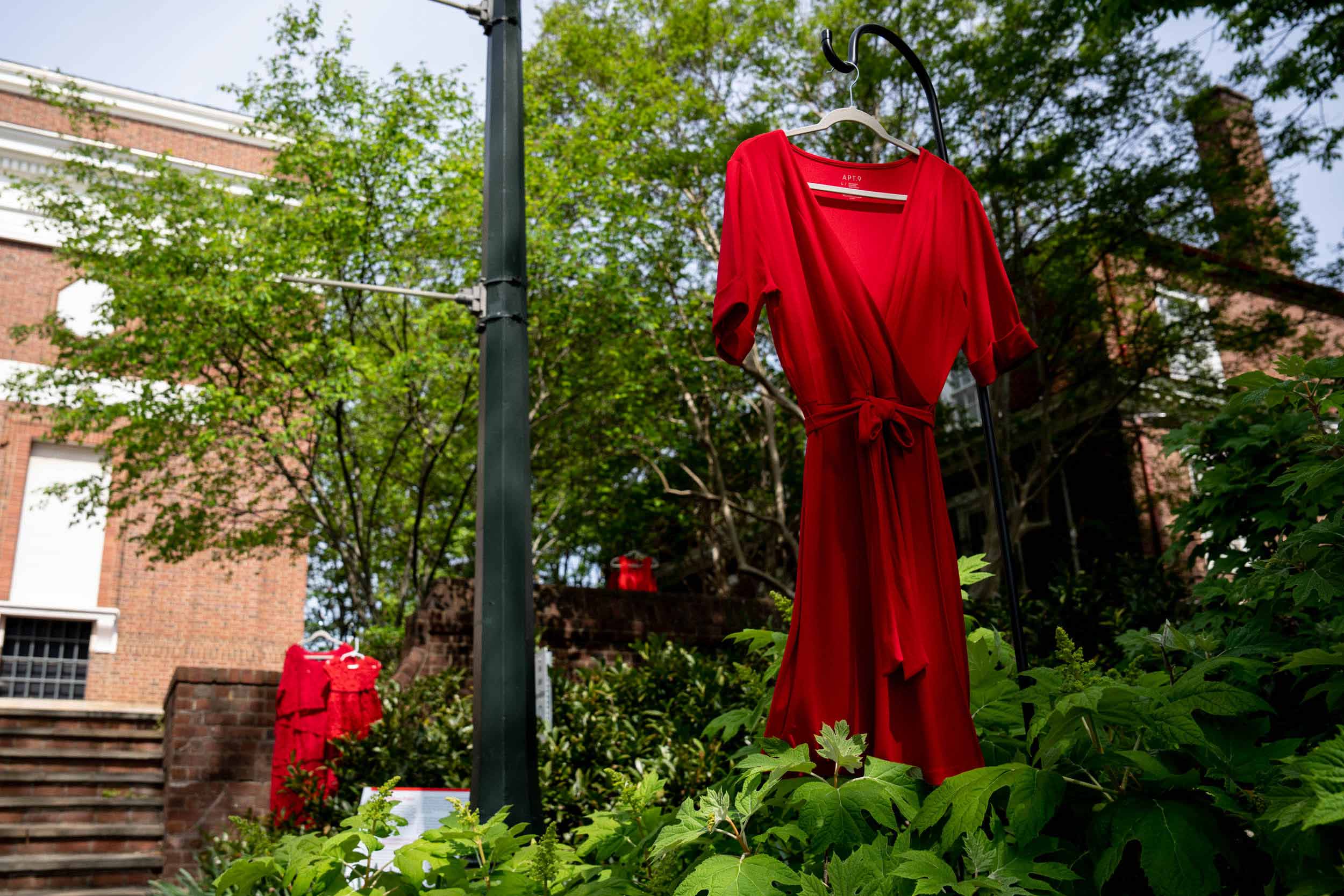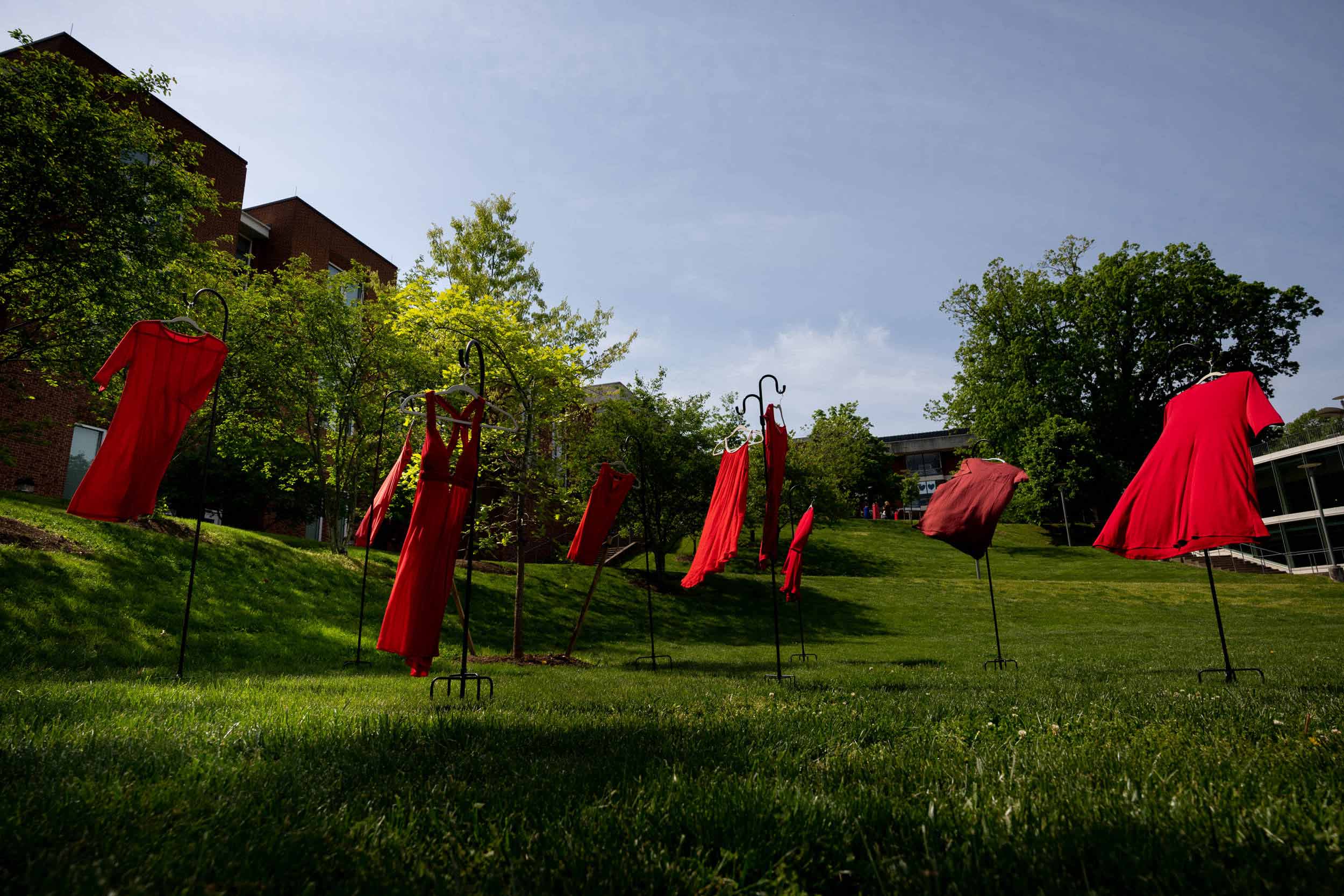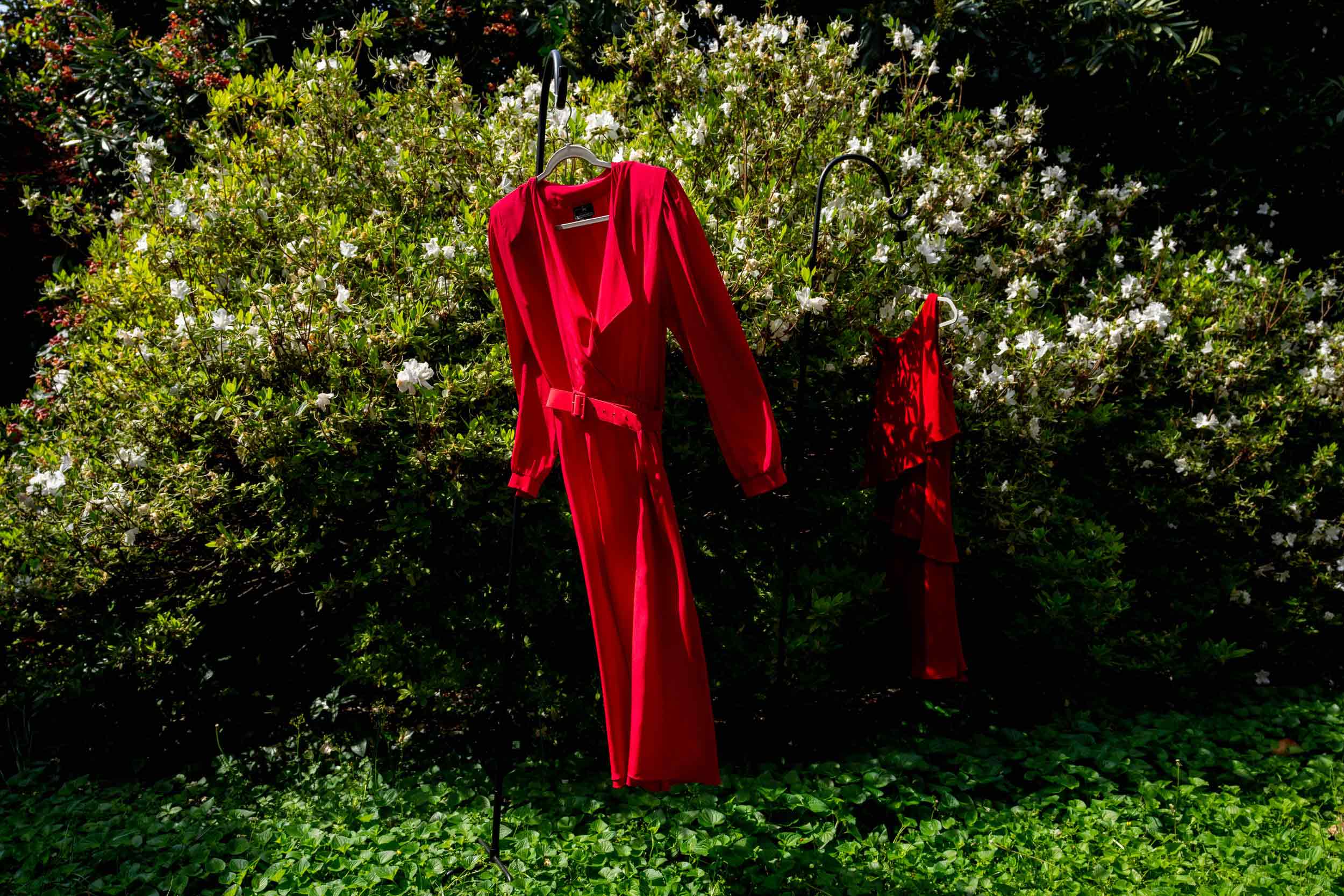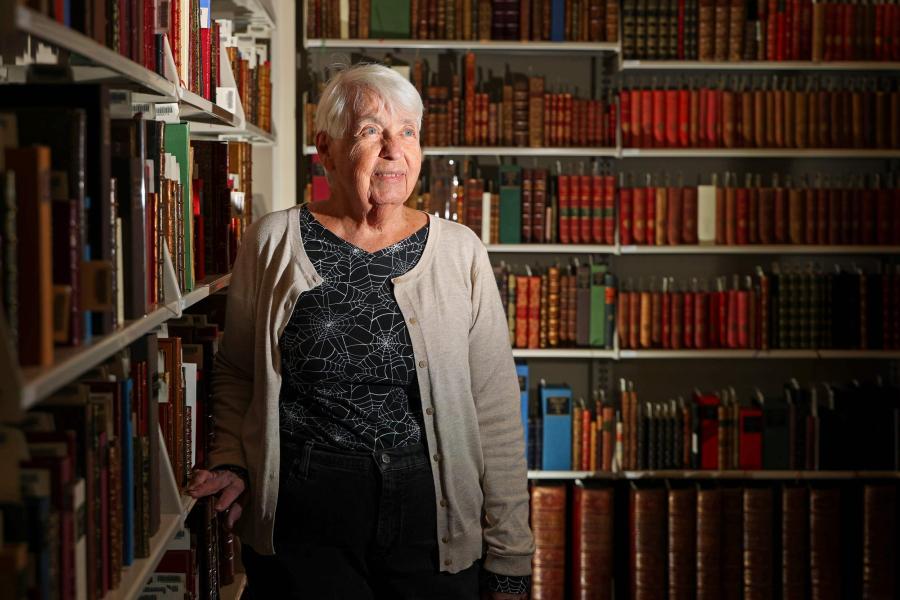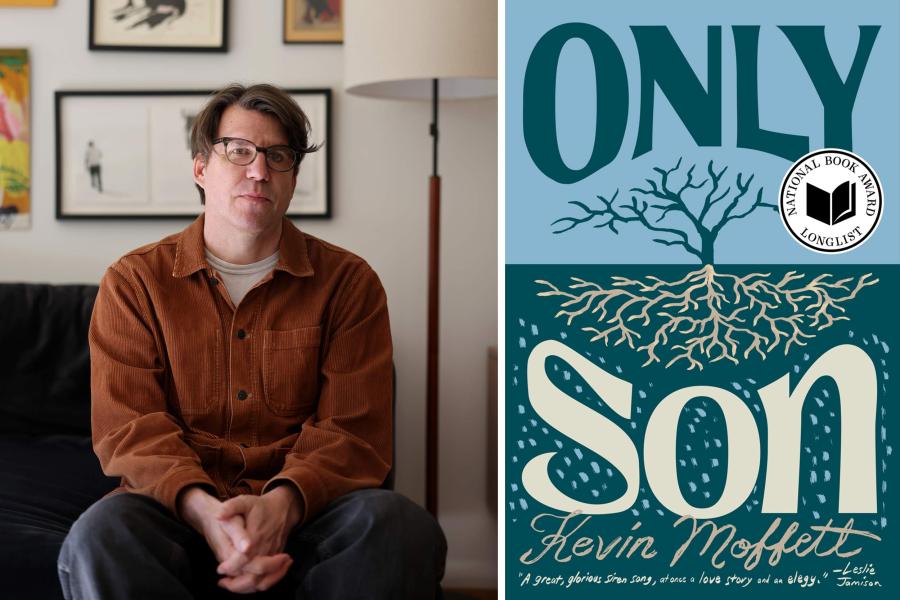The empty red dresses spun in the wind where they hung from hooks along Culbreth Road. Their skirts flared with the breeze. Each one represented a missing or murdered Indigenous woman, girl or “two-spirit person” – a third gender category that describes people who are neither men nor women, according to the Indian Health Service.
The REDress Project, launched in 2010 by the mixed-ancestry Métis artist Jamie Black, honors Indigenous victims in the United States and Canada. REDress has been exhibited at the Smithsonian Institutes’ National Museum of the American Indian, the Canadian Human Rights Museum, the Manitoba legislature and at other colleges and universities across North America. Now, it’s come to the University of Virginia.
“It’s a blend of commemoration, awareness building, art and activism all at once,” said Catherine Walden, program director for the Mellon Race, Place and Equity Program. “Where better to put it than in an institution of learning?”
Anyone curious about the installation can find the dresses inside and outside The Fralin Museum of Art, on the Arts Grounds between Culbreth Road and the School of Architecture, and along McCormick Road. The exhibit officially opens Friday, although installation began earlier this week.
